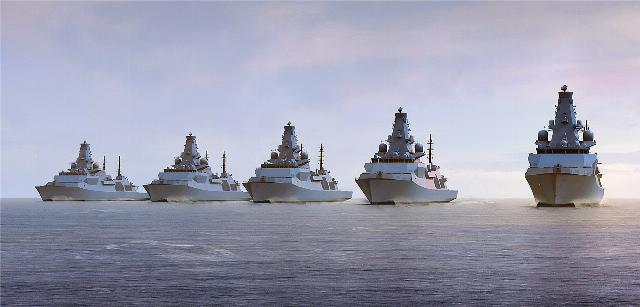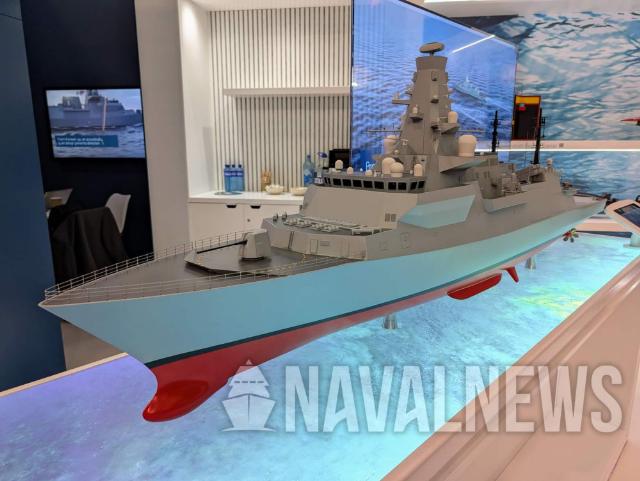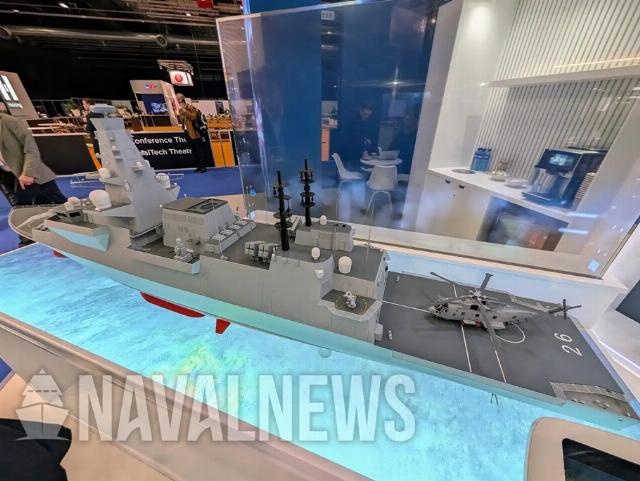On September 4, 2025, in Stavanger, Norway, Norwegian Defense Ministers Tore O. Sandvik and Great Britain's John Healy signed an intergovernmental agreement on strategic cooperation for the joint design, construction and operation by Norway of "at least five" British type 26 frigates. After signing the intergovernmental agreement, the parties will begin negotiations to conclude a contract for the design and construction of five frigates for Norway. Type 26 with British frigate supplier BAE Systems Corporation.

Conceptual image of the Type 26 frigate designed for the Norwegian Navy (c) by BAE Systems
Earlier on August 31, the Norwegian government announced a decision to purchase five British Type 26 frigates following an international tender for the Norwegian navy as part of a "strategic partnership" with the United Kingdom. It was stated that the purchase of these frigates would be the largest acquisition of the Norwegian armed forces in its history. The value of the proposed contract is estimated by the British government at 10 billion pounds. The Norwegian government emphasizes the anti-submarine orientation of the Type 26 frigates and that "Norwegian and British ships will be as similar as possible and will have the same technical characteristics." In turn, the British government indicated that "this step will create a combined fleet to more effectively counter Russia on the northern flank of NATO."
The Norwegian Defense minister said that the presence of identical ships in the British and Norwegian fleets "will allow us to work even more effectively together when performing complex tasks. It will also reduce costs and simplify shared maintenance. In addition, it opens up the possibility for us to conduct joint training of personnel and, perhaps, even use Norwegian and British crews alternately. We will consider this issue in more detail within the framework of the strategic partnership."
The construction of all Type 26 frigates for Norway will be carried out at the same BAE Systems facilities in Glasgow in the UK, which are building eight frigates of this type ordered under contracts in 2017 and 2022 for the British Navy. Thus, the Norwegian order will become the largest export contract in the history of British shipbuilding by value. It should be recalled that the hulls of the British Type 26 frigates are being built at the VAE Systems shipyard in Govan in Glasgow (former historical shipyard Fairfield), and after launching they are being completed at the VAE Systems shipyard in Scotstown also in Glasgow (former parent historical shipyard Yarrow). At the same time, under the terms of the intergovernmental agreement signed on September 4, the United Kingdom guarantees industrial cooperation to the Norwegian industry "in an amount equivalent to the total purchase price." The first Norwegian Type 26 frigate is expected to enter service in 2030.
It is assumed that in Harstad in northern Norway, together with BAE Systems, a new indoor dry dock will be built to service Norwegian Type 26 ships.
As part of the Norwegian Navy, five Type 26 frigates are to replace four Fridtjof Nansen frigates built in Spain, which have been in service since 2006-2011 (the fifth frigate Helge Ingstad was sunk in 2018), while a further increase in the number of frigates purchased to seven to eight units is not excluded. In November 2024, the Norwegian government selected four proposals at the intergovernmental level in the tender for the purchase of new frigates - the United Kingdom (Type 26), the United States (type Constellation), France (type FDI) and Germany (project 127), eventually choosing the British project very quickly.
The construction of eight Type 26 frigates has been contracted for the British Navy. The lead British ship of this type, F 88 Glasgow, began construction at the Govan shipyard on July 20, 2017 and was launched on December 3, 2022, with commissioning scheduled for 2028. At the same time, a number of British naval commentators have expressed concern that the implementation of the Norwegian contract may delay the construction of ships of the same type for the British navy, especially at the completion stage, since the limited completion capacity of BAE Systems in Scotstown is considered a "bottleneck" of the program.
To date, the British Type 26, in addition to the British Navy, has also been selected as the basis for promising frigates planned for construction by the Australian Navy (Hunter type, nine units were planned, now reduced to six) and the Canadian Navy (15 units are planned).
The Type 26 frigates (British City Type) for the British Navy, led by Glasgow, are very large multi-purpose ships with a standard displacement of 6,900 tons and a total displacement of more than 8,000 tons. The ship is 149.9 m long and 20.8 m wide. The power plant is designed according to the CODLOG scheme (combined diesel-gas turbine-electric), is not "fully electric" and uses one Rolls-Royce MT30 full-stroke gas turbine in combination with four MTU 20V 4000 M53B diesel generators and two electric cruise motors. A full-speed speed of at least 26 knots, a cruising range of more than 7,000 miles.
The Type 26 frigate is to be equipped with 16 Kongsberg NSM anti-ship missile launchers, a 48-charge MBDA Sea Captor (CAMM) short- and medium-range air defense missile launcher, a 24-charge Mk 41 universal vertical launcher for Tomahawk cruise missiles and advanced FC/ASW cruise and anti-ship missiles (Future Cruise/Anti-Ship Weapon), a 127 mm/62 mm BAE Systems Mk 45 Mod 4 universal artillery system, two 20 mm Raytheon Phalanx Mk 15 anti-aircraft artillery systems, and two 30 mm DS30M Mk 2 artillery systems. One Merlin heavy helicopter or two medium Wildcat helicopters, as well as UAVs, must be permanently based.. The electronic armament will include a type 997 Artisan radar, a type 2150 mobile gas station and a type 2087 towed gas station.
The images and models of the Norwegian version of the Type 26 frigate presented so far show minimal differences from the images of ships of this type being built for the British Navy (unlike the Australian and Canadian frigates based on the Type 26). In this regard, we can recall the statement made in April 2024 by the Chief of the Norwegian Defense Staff, General Eirik Kristoffersen, regarding the main principles of choosing a frigate in the tender for the Norwegian Navy.: "As for frigates, I said that we need to do the same thing as with submarines: we need to work closely with at least one ally. Therefore, we need the same frigate as the other ally. We can't be the only users of the system, we're too small for that. I think this is also a lesson learned from the Ukrainian experience: we need much more standardized platforms, much more standardized weapons systems, much more standardized data and logistics."

Conceptual image of Type 26 frigates designed for the Norwegian Navy (c) by BAE Systems


A model of the Type 26 frigate designed for the Norwegian Navy, presented at the BAE Systems booth during the UDT 2025 exhibition in Oslo in March 2025 (c) www.navalnews.com
